目次
Craft Report
A Thousand Years of History and Dignity: Crafting Sanbō, Vessels Facing the Divine.

The upper part is the oshiki (tray), the lower part is the tsutsudō (base). The side without holes is placed facing the deities.
In Atsuta Ward, Nagoya City,Iwata Sanbō Seisakusho Co., Ltd.(hereafter Iwata Sanbō) has been crafting Sanbō and other traditional ritual implements since the mid-Edo period. While inheriting these traditional techniques, the company also applies them to the development of new daily-use items.
We spoke with Yasuyuki Iwata, the seventh-generation successor. From a young age, he often played in the workshop, surrounded by craftsmen, where he naturally absorbed both the joys and challenges of ritual craft.
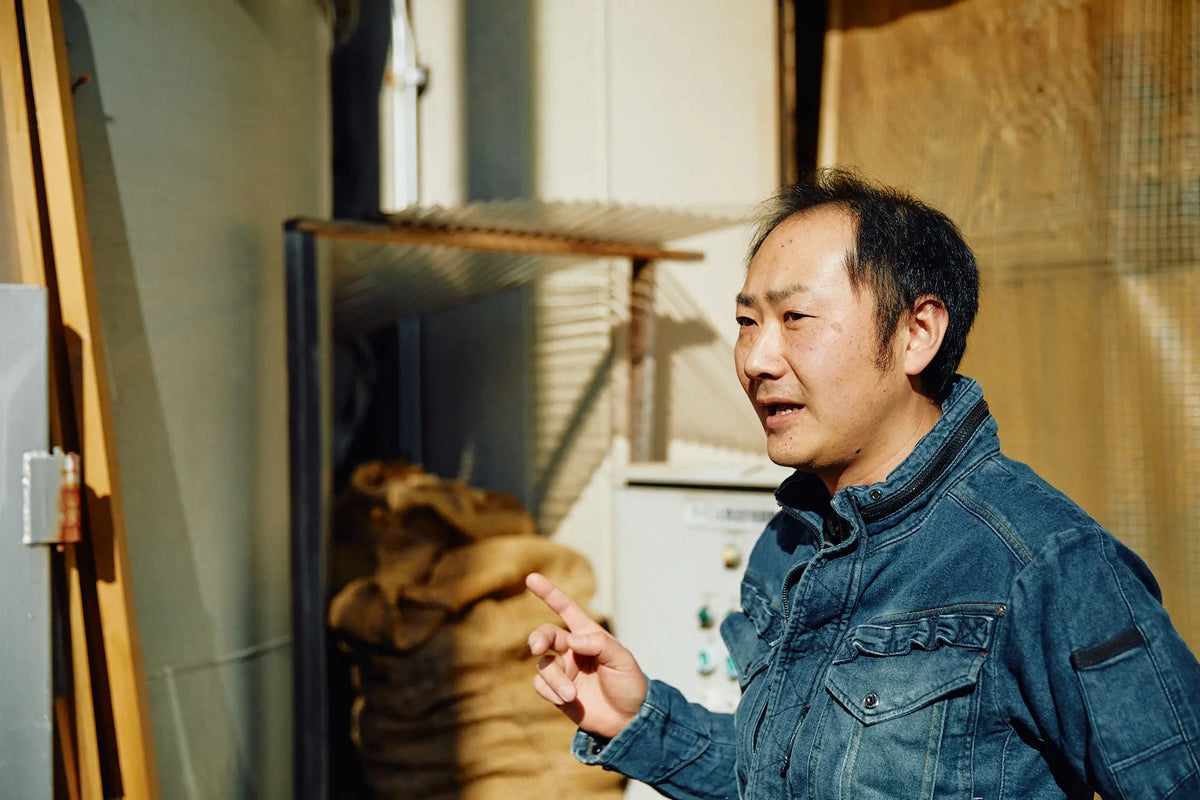
Yasuyuki Iwata, 7th-generation head of Iwata Sanbō Seisakusho.
The Pursuit of the Finest Hinoki.
Since the Edo period, Iwata Sanbō has used the esteemed Kiso Hinoki cypress to craft Sanbō, earning recognition from Japan’s most renowned shrines and temples.
This time, we were shown the process of making a tray sold as a daily-use item. Although its shape differs from a Sanbō, the techniques of Sanbō-making are applied directly.
Even though high-quality hinoki is used, further selection occurs during production. Not only are boards with visible knots excluded, but also those with reddish tones or slightly wandering grain. Boards cut from logs with the expensive masame-biki (straight-grain cut) are carefully stored to ensure the most beautiful grain. Yet, as Iwata explains while flipping through boards, less than half of the stored wood is usable—underscoring how strict the selection is.

On the company rooftop, rainwater is used to wash away the wood’s natural oils.
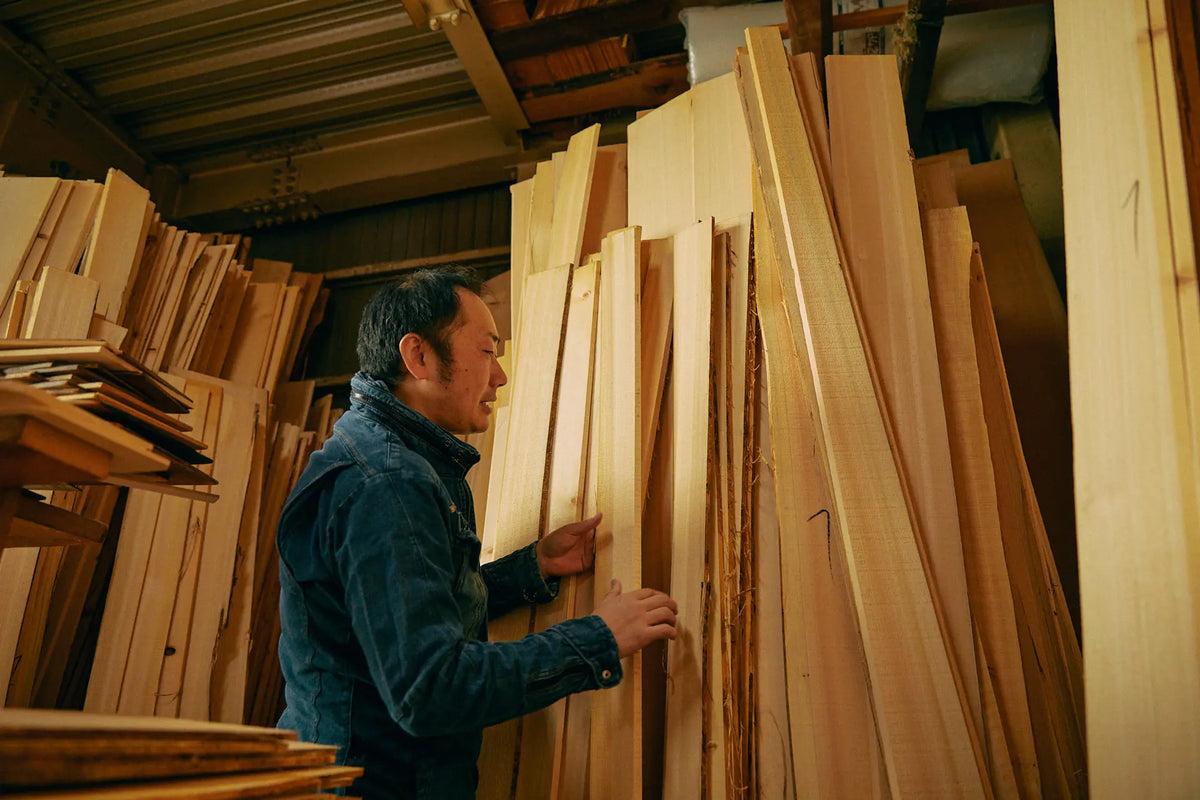
To the untrained eye, all hinoki boards may look beautiful.
During sawing, only the best portions of the selected boards are retained. Next, grooves are carved almost to the breaking point to allow bending into the tray’s frame. To prevent snapping, the wood is soaked in hot water to soften it. Once pliable, it is bent in one motion, the ends pressed together, and after drying, the frame is attached to the base.
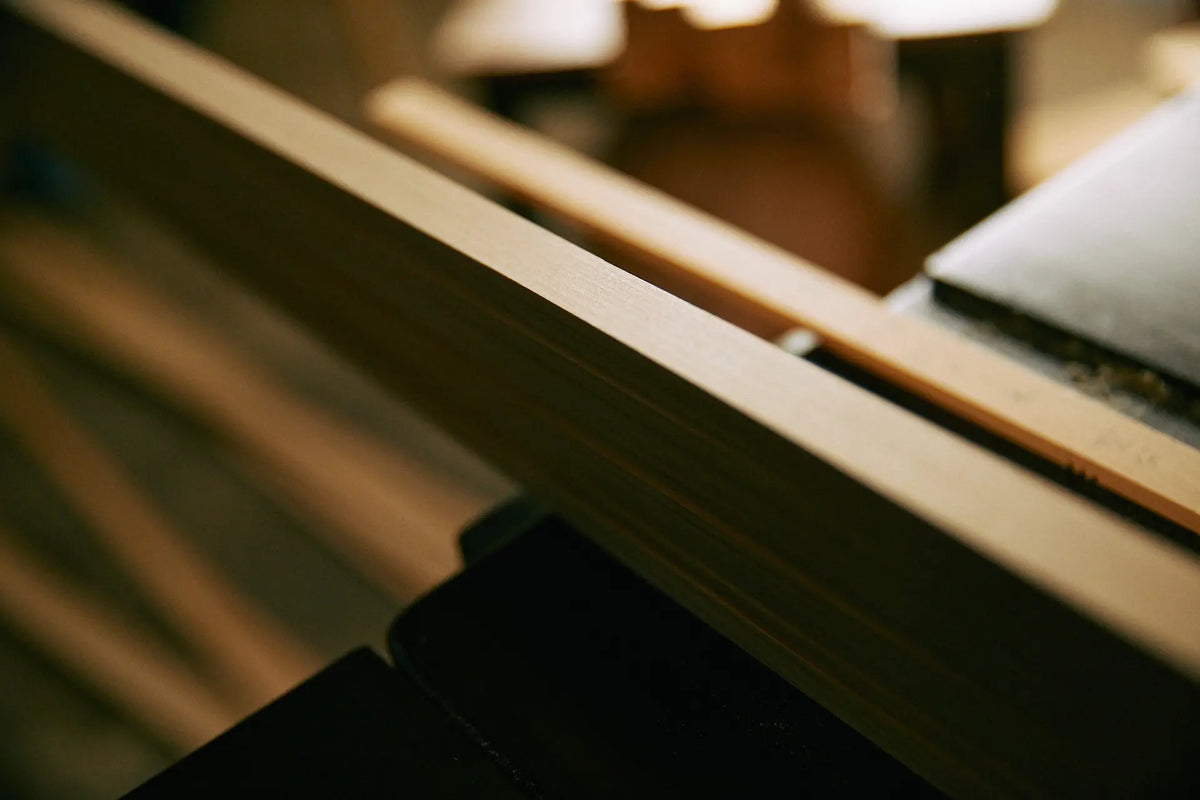
The tray’s rim. Planing reveals hinoki’s natural luster.

Grooves just 1mm thick allow bending when moistened—an inherent property of hinoki.
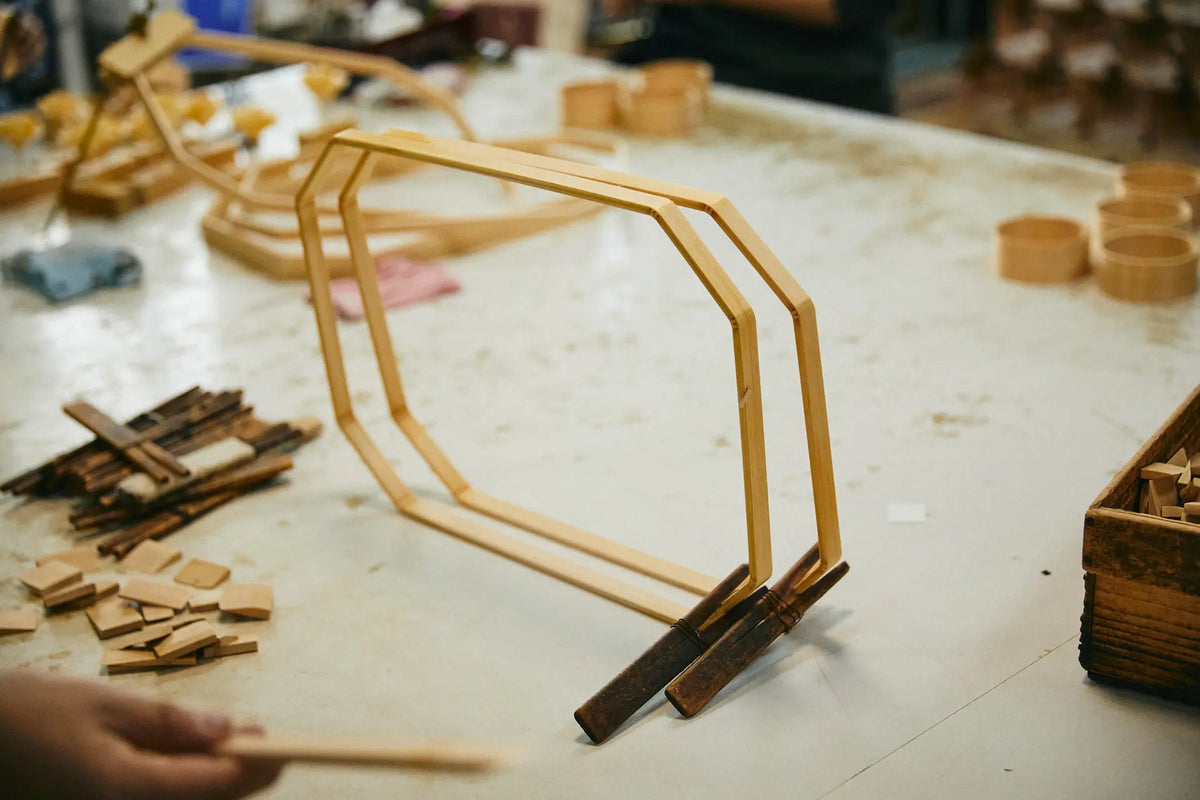
Once dried, the frame is bonded to the tray body to complete it.
Using Precious Materials Without Waste.
High-quality production inevitably creates significant material loss. With hinoki that can be over 300 years old, the waste is substantial. In the past, the resulting wood shavings were burned, but Iwata began to feel a responsibility toward environmental concerns.
Moreover, most products—including Sanbō—are traditionally left unpainted. “Applying paint to tools used before the gods would be seen as deceptive,” Iwata explains. “That’s why the challenge is to make them beautiful in unfinished wood. It is a direct contest of craftsmanship.”
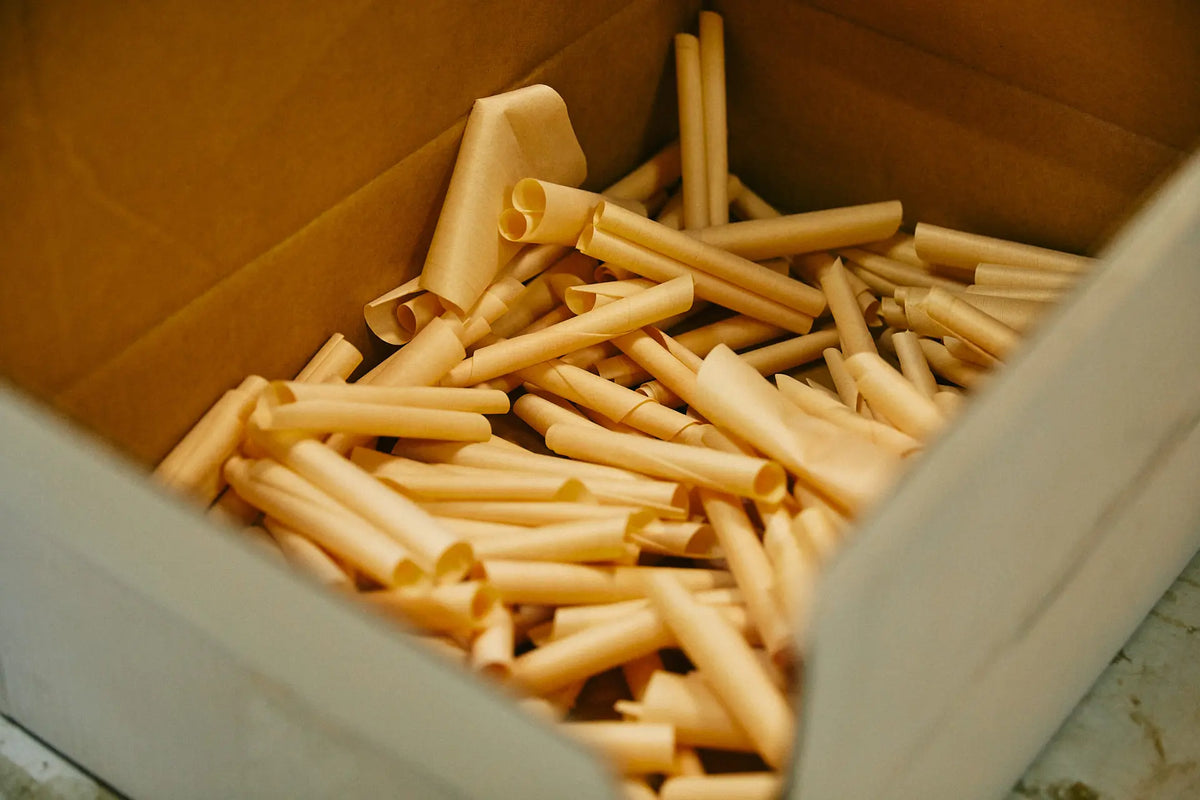
Wood shavings produced in the process, made from carefully selected timber, have elegant grain.
Among the solutions is the “aroma diffuser,” made by shaping planed shavings into delicate flower petals. Essential oil extracted from the same hinoki is absorbed into the petals, releasing fragrance naturally.
Because the thin shavings bend easily when wet, like origami, and curl as they dry, these properties were cleverly used to mimic the opening of flowers. The shavings are also reused as cushioning material in product packaging. Initially, Iwata’s wife and friends helped create the petals, and when prototypes were posted on Facebook, new ideas and feedback flowed in. “As a manufacturer, it’s our responsibility,” says Iwata. “We cannot allow such precious hinoki to become just smoke.”
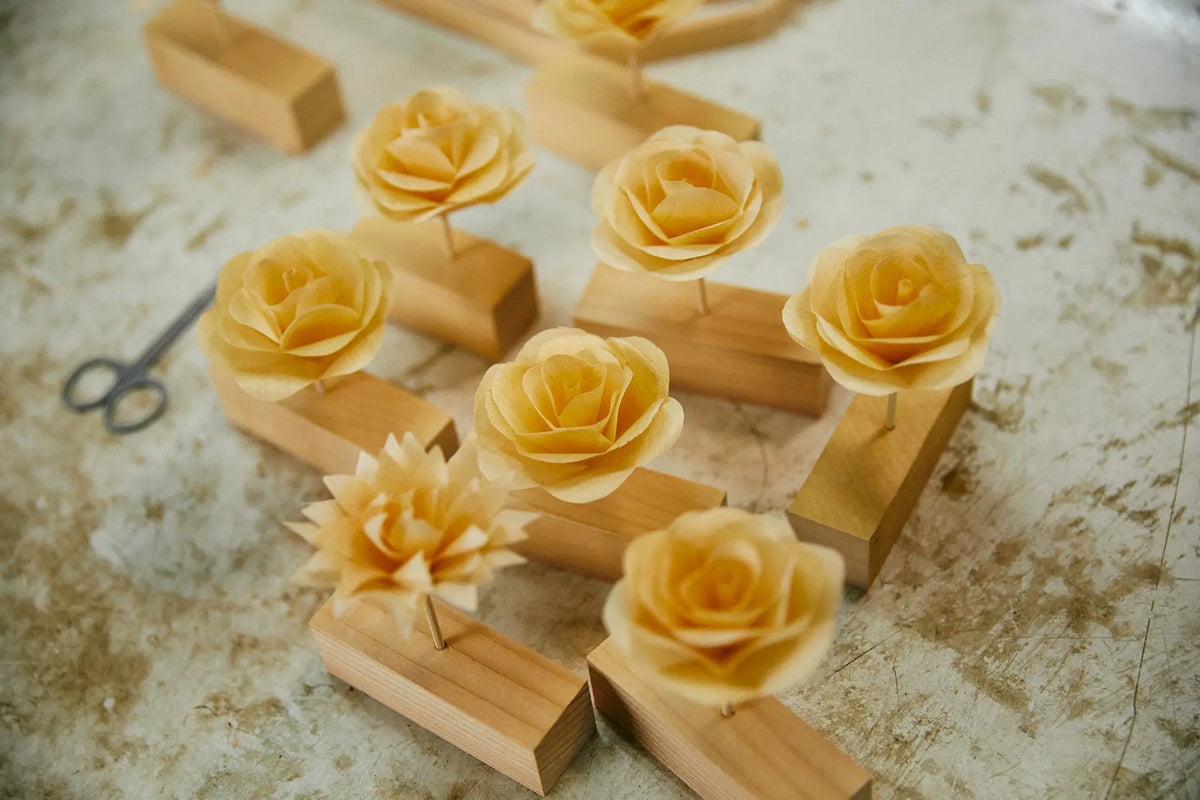
Each diffuser is carefully handmade, petal by petal.
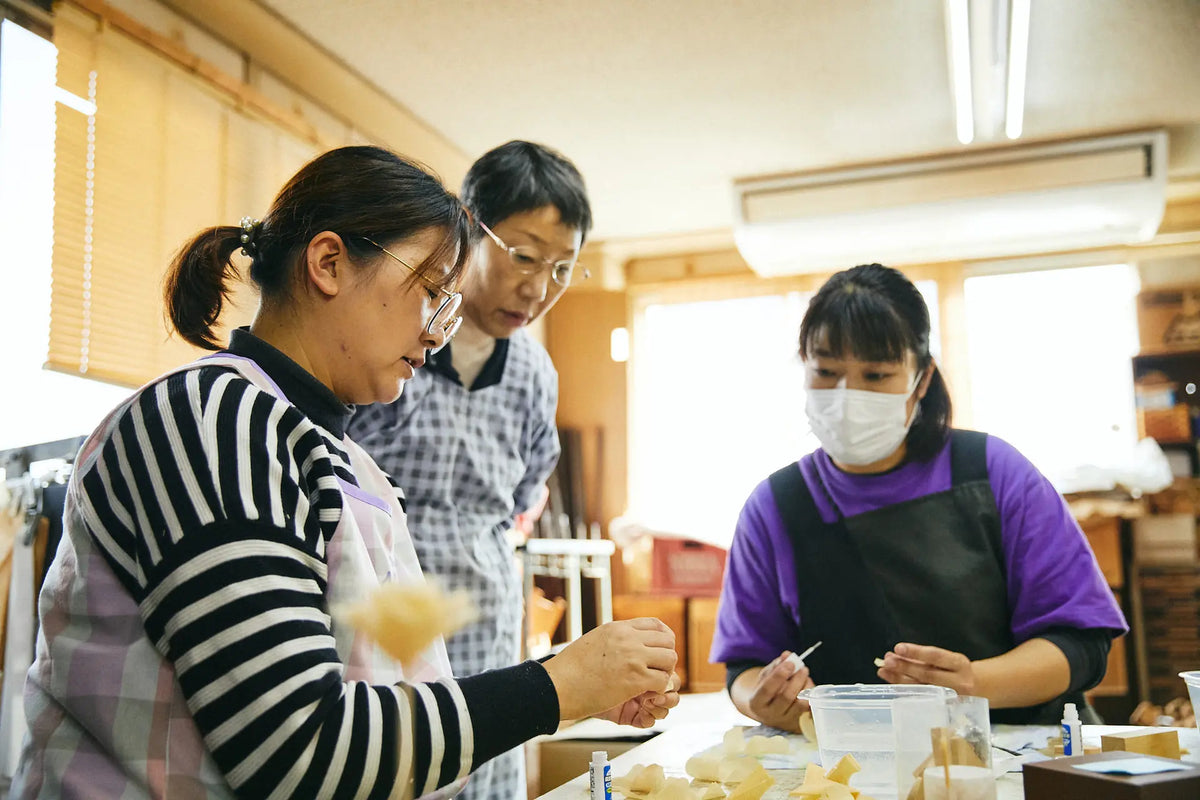
The workshop buzzes with ideas from women staff members.
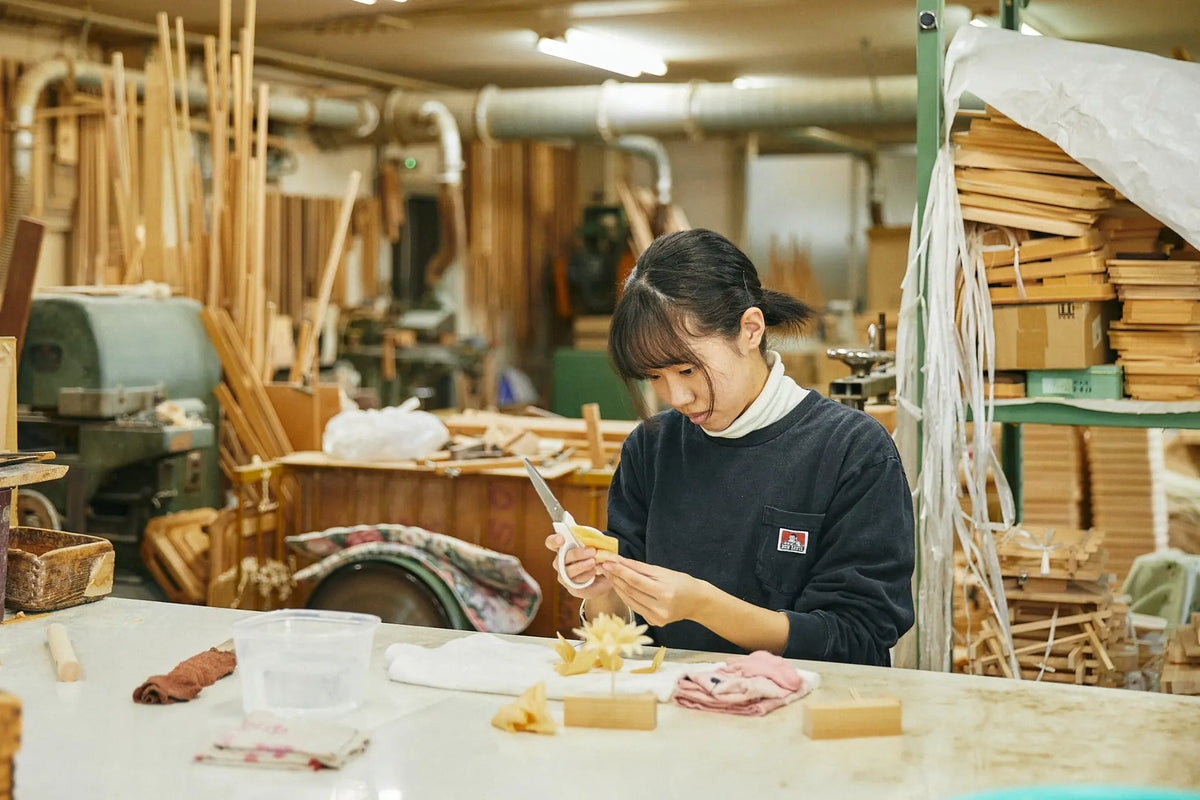
At the time of the interview, a staff member with just one year of experience was already called ‘teacher’ for her skill in this work.
Sanbō, with the Spirit of Japan, to the World.”
Iwata Sanbō is also working on international outreach, launching a new brand called NUSA together with product designer Takumi Shimamura (head of Kurts Inc.).
With the same expertise in selecting Kiso hinoki and the painstaking handcraft of the artisans, they produce bento boxes, trays, tables, and other items for modern daily use—applying Sanbō-making techniques with a design perspective.
“Traditional industries have survived for over a hundred years precisely because they evolved with the times. It’s unrealistic to expect things to be used in the exact same way as in the Edo period. That’s why today’s craftsmen must protect traditional methods while also proposing ideas that fit the present age.”
At its core, the Sanbō is a tool for expressing “gratitude.” This traditional craft, which embodies Japan’s culture of thankfulness, is now reaching overseas in new forms. Perhaps no one imagined such a future before. But Iwata Sanbō has already taken its first step in changing history.
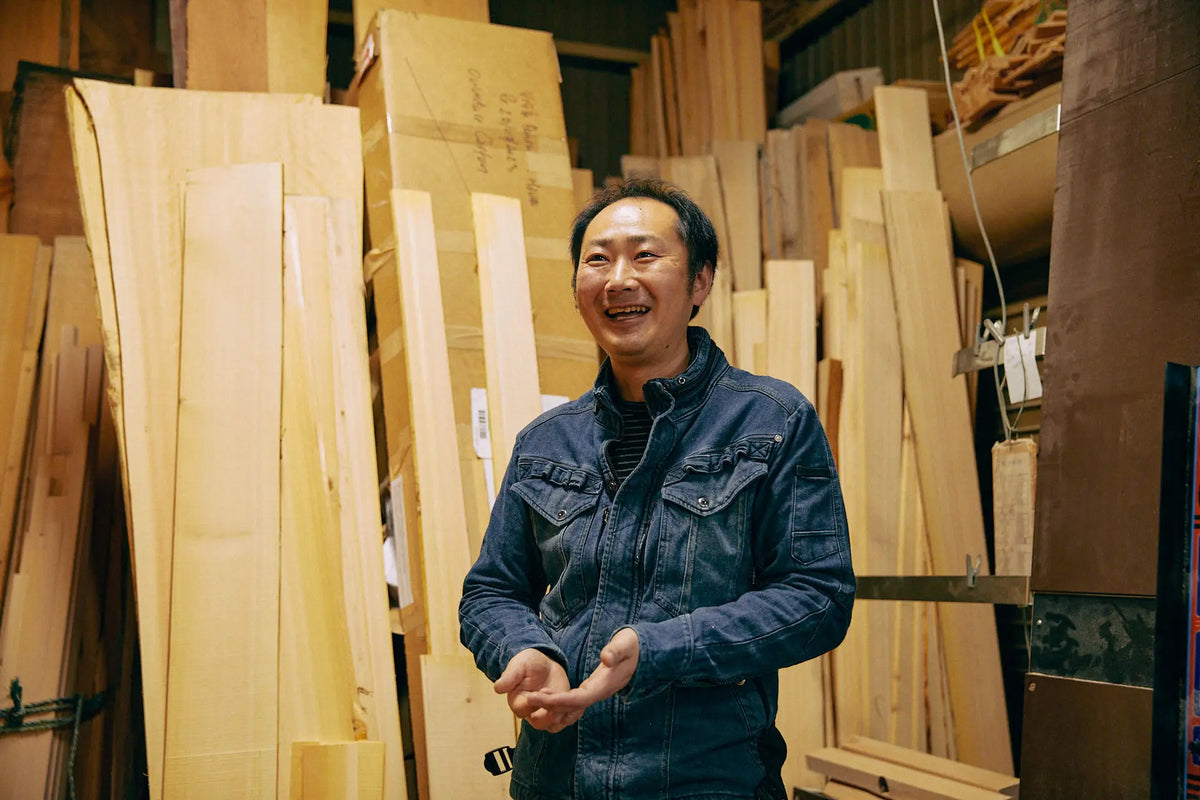
Interview and photography: Daiki Morishita





